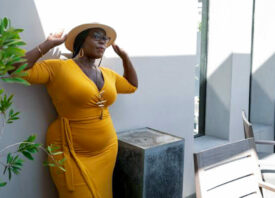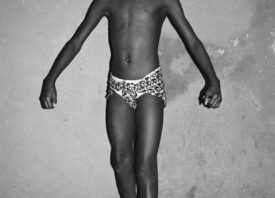Search this site
Tracing the Journey of 17 Emerging African Photographers


Between 2008-2018, seventeen emerging photographers from across sub-Saharan African completed the “Photographer’s Masterclass,” a decade-long mentorship program curated by Simon Njami and the Goethe-Institut, which has resulted in the publication of the sumptuous compendium, The Journey: New Positions in African Photography (Kerber Verlag).
The Masterclass was not a formal school but rather served as a mobile academy, traveling across the continent to major cities included Maputo, Mozambique; Bamako, Mali; Addis-Ababa, Ethiopia; Lubumbashi, Democratic Republic of Congo; Johannesburg, South Africa; and Khartoum, Sudan — a grand voyage in the truest sense of the word.
Over a decade, the forces of tragedy infiltrated the group: Henrike Grohs, the head of the Goethe-Institute in the Ivory Coast, was killed at a beach resort near Abidjan in a terrorist attack. Two years earlier, Thabiso Skgala, one of the graduates, took his own life. These losses bound the group more tightly over the years.
After a decade dedicated to the physical, intellectual, and spiritual paths undertaken by members of the group, they created The Journey, an impressive collection of 17 portfolio and 13 essays that explore ideas about African photography in this particular historical moment.

The book features works by Sammy Baloji, Eric Gyamfi, Macline Hien, Lebohang Kganye, Ala Kheir, Gosette Lubondo, Mário Macilau, Sabelo Mlangeni, Moss Morwahla Moeng, Mimi Cherono Ng’ok, Musa N. Nxumalo, Adeola Olagunju, Monique Pelser, Thabiso Sekgala, Georges Senga, Michael Tsegaye, and Jansen van Staden who hail from the Democratic Republic of the Congo, Ethiopia, Ghana, Ivory Coast, Kenya, Mozambique, Nigeria, South Africa, and Sudan.
The works showcased in The Journey provide a powerful look at the depth and diversity of contemporary African photography liberated from neocolonialism. Western impressions of Africa have largely been shaped by propaganda espoused by imperialists of the Global North, used to present the continent as lesser than the glorious world that gave birth to humanity and nurtured its development for hundreds of thousands of years.
By restoring the power of imagemaking to Africans themselves, the artists featured in The Journey offer a glorious tapestry of aesthetic approaches and narratives that could only be told by insiders with deep roots in the land.

South African photographer Lebohang Kganye revels in the matrilineal line, creating a series of photographs where she dons her deceased mother’s clothing and returns to spaces various places including her maternal grandmother’s home, to create double portraits of herself and her mother in the 2013 series Ke Lefa Laka: Heir-story (“It’s my inheritance” in Sotho)
“Initially it was about the [deceased] family members being ghosts, but later on I realized I was the ghost, because I am the one who was forcing myself into their history, into a place and an era that I’ve not been a part of,” Kganye told curator Manon Brat in 2014. “I’II put myself in a story that I don’t belong in and that I can’t claim but I’m conscious of my presence there anyway.”
Kganye’s self-described “orchestrated fiction and collective invention” are also comments of the significance of portraiture in South Africa during apartheid, when a local photographer would travel from home to home to set up appointments for photo shoots. Here, we see life among Black South Africans through their own lens, living in a system of injustice and oppression but not representing themselves as victims. Instead, they take joy and pride in who they are, offering the important reminder that we must consider the photographer as much of a subject in their work as the people they photograph.
Each photographer featured in the book offers a powerful, individual perspective on their corner of Africa from a vantage point that could only by held by an insider seeking to tell their stories on their own terms.
Akinbode Akinbiyi, curator of the first Phootographers’ Masterclass in 2008 writes in the essay, “A Tale From Eight Cities,” featured at the beginning of the book, “This self-discovery, a search for deeper chords, was very much the purpose and the drive of the Masterclass throughout….This book is an expression of our journey.”



All images: Courtesy of Kerber Verlag



